Did you know that there are over 24,000 known species of insect in the UK! They are the most diverse and ecologically important group of animals, providing us with pollinated food crops and a source of food for many species of animals, without them us along with nature would be in trouble. Insects come in a number of groups and so in todays blog we're going to be sharing some of those groups you might find in your own garden or when out and about!
Celebrating Insect Week
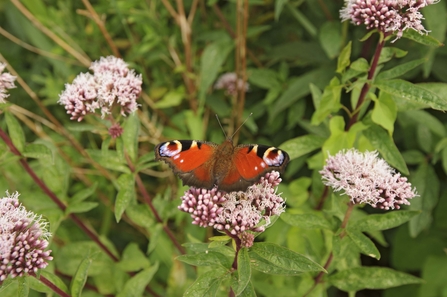
Peacock ©Terry Whittaker/2020VISION
Ladybirds
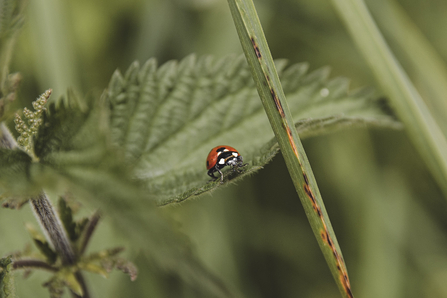
Ladybird (c) Kayleigh Wright
These well-loved beetles are easy to recognise with their bright red wing cases and black spots, which is used to warn predators of their bitter taste. The most common species you might come across are the two-spot and seven-spot ladybirds, however there are about 40 other species found in the UK!
Shieldbugs
Hawthorn shieldbug (c) Richard Burkmar
Sheildbugs live up to their name with their flat, triangular bodies with shield-like shapes on their backs. There are a number of shieldbug species, the hawthorn shieldbug being the UK’s largest and most commonly encountered species. Look out for its green ‘shield’ in the middle of its back, with red sides and pronotum (area behind the head).
Butterflies
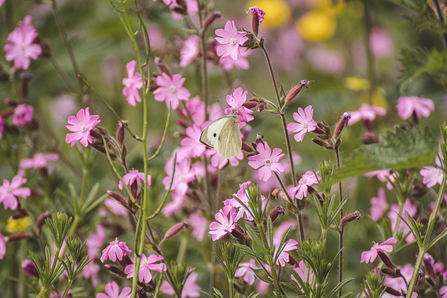
Small white butterfly (c) Kayleigh Wright
The UK has 59 species of butterflies, two of those being regular migrants – the painted lady and clouded yellow. The most common butterfly in the UK is the small white, which has creamy white wings and small black tips with one or two wing spots. Some other species you might find fluttering about at this time of year are small tortoiseshell, peacock, red admiral, brimstone or holly blue.
Moths
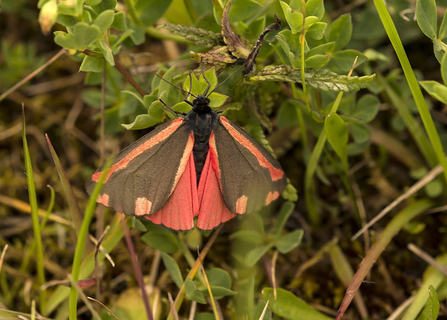
©Bob Coyle
Despite being overlooked, there are over 2,500 species of moth in Britain and they hold such a vital role in the ecosystem. Often dismissed as being brown and boring, there are many moths that are bright and colourful! They don’t just come out at night either, many of them fly during the day, especially on warm sunny days. The cinnabar moth is a moth you might see out during the day. Look out for its slate-black wings with two red spots and two pinkish-red stripes on the rounded forewings. Its hindwings are also pinkish-red and bordered with black.
Bumblebees
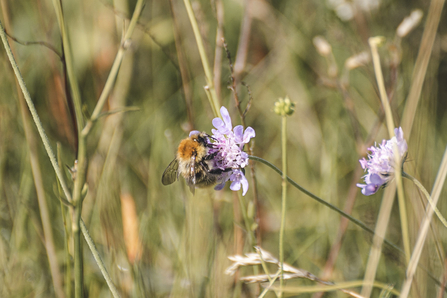
Common carder bee (c) Kayleigh Wright
Another one of our most-loved insects, the bumblebee. We have 24 species of bumblebee in the UK, but sadly they are in decline due to habitat loss. There are eight of these species that you are most commonly like to see including, the buff-tailed bee, white-tailed bee, garden bumblebee, heath bumblebee, tree bumblebee, common carder bee, early bumblebee and red-tailed bumblebee.
Dragonflies and damselflies
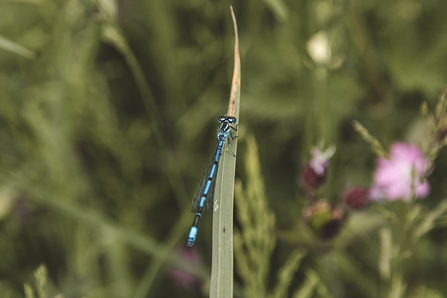
Common blue damselfly (c) Kayleigh Wright
Common darter dragonfly (c) Janet Packham
We’re heading into dragonfly season and soon we will be seeing these fascinating insects zooming across the water. There are over 50 species of dragonflies and damselflies in the UK. The easiest way to tell the difference between the two is that dragonflies rest with their wings open and damselflies rest with their wings closed! Look out for the common blue damselfly with its blue abdomen with black bands. And if it is a dragonfly you’re looking out for, one of the most common ones to find is the common darter, with its thick red abdomen and wings out at right angles.
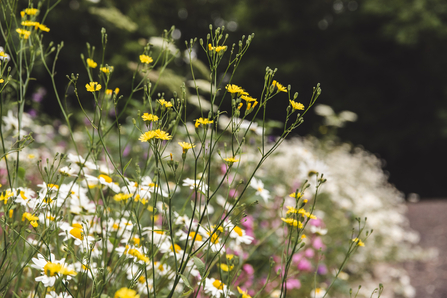
Wildflower meadow (c) Kayleigh Wright
Our insect numbers have declined significantly in the last 20 years, due to many different factors including habitat loss and the use of pesticides and fertilisers. There are many things you can do to help give insects a chance to recover such as:
- Planting insect-friendly plants, to provide food for pollinators and other invertebrates.
- Having a wild non-mown patch in your garden, which provides insects with a space to lay their eggs and shelter from predators.
- Creating log piles or providing bug hotels, to create a safe haven for insects.
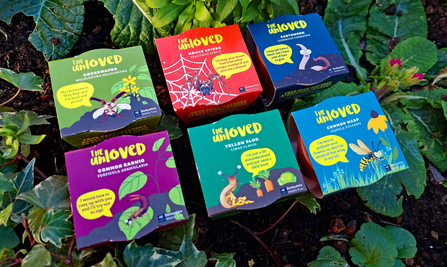
🕷️Love the Unloved 🕷️
Our frequently unloved and unwanted species are the ones who need your support most of all. Can you love the unloved? These quirky seed pots include everything you need to grow your own forget-me-nots whilst also supporting wildlife in Derbyshire. Follow the link below to our shop!
